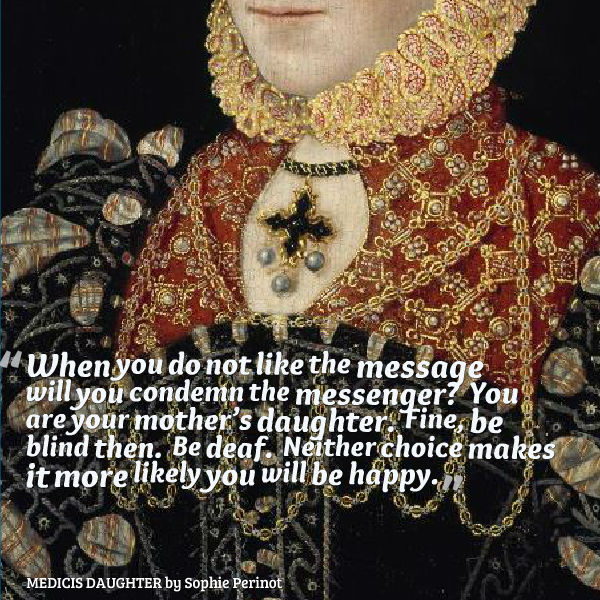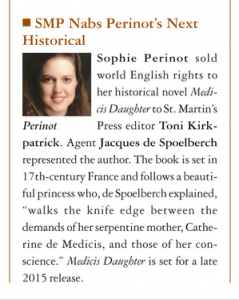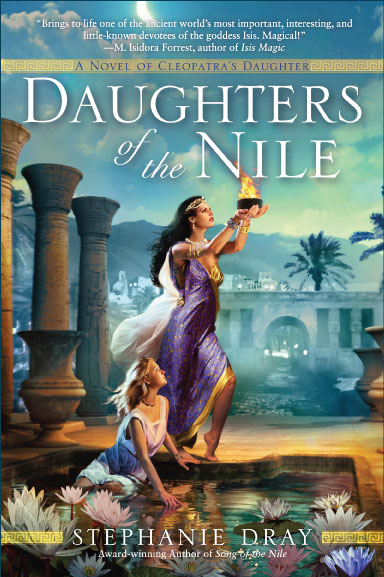Tag: new releases
Interview with Laura Morelli, Author of THE GIANT
If you’ve been to Florence you’ve seen Michelangelo’s David. If you haven’t been to Florence you’ve seen countless images of him. The David is a cultural icon and even 500 years after his creation still has the power to leave us awe struck.
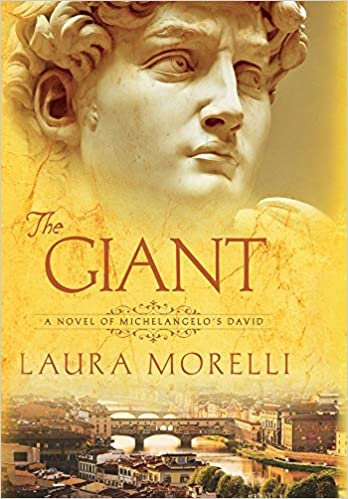
Now Laura Morelli—talented novelist and PhD Art Historian—has a breathtaking new novel out about the creation of this Renassaisance Art Masterwork, and I am THRILLED to welcome her to my blog today to talk about the process of creation for both her novel, THE GIANT, and Michelangelo’s David!
Let’s start things off with a teaser for THE GIANT . . . .
As a colossal statue takes shape in Renaissance Florence, the lives of a master sculptor and a struggling painter become stunningly intertwined.
Florence, 1500. Fresco painter Jacopo Torni longs to make his mark in the world. But while his peers enjoy prestigious commissions, his meager painting jobs are all earmarked to pay down gambling debts.
When Jacopo hears of a competition to create Florence’s greatest sculpture, he pins all his hopes on a collaboration with his boyhood companion, Michelangelo Buonarroti. But will the frustrated artist ever emerge from the shadow of his singularly gifted friend?
From the author of THE PAINTER’S APPRENTICE and THE GONDOLA MAKER comes a gorgeously crafted, immersive tale of Renaissance Italy.
Laura, I have such distinct memories of the first time I stood in front of Michelangelo’s David—gape-mouthed and totally in awe. What do you think draws people to the David?
Me too! I am always amazed at the number of people who tell me that this sculpture is the thing that impressed them the most on a trip to Italy.
In fact, when my family returned from Italy last summer, I asked my four teenagers to name the top three favorite things they saw. The David was on the top of each of their lists (and I promise I tried not to influence their choices!). I think that’s amazing.
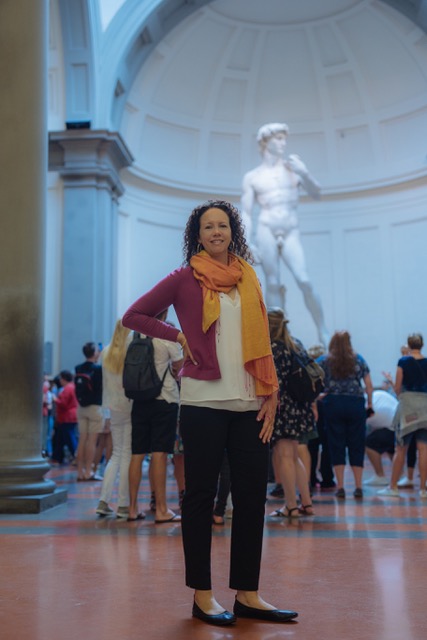
A Time Magazine article in the 1980s reported on the “emotional trauma” experienced by first-time viewers of the David. And a few visitors have even tried to disrobe before the statue, only to be quickly led away by museum guards!
I have long wondered what it was about this statue and the irreverent stone carver who made it that still has the power to capture people’s imagination–to make their jaws drop, to leave them speechless–even in our current time of multimedia overload. And even after studying it for some thirty years, I’m still not convinced it’s something that can be put 100% into words. That’s the power of art!
As a PhD art historian, how do you think the David influenced the course and direction of art at the moment of its unveiling and in the aftermath of its creation?
The David was the first colossal nude on Italian soil since ancient Roman times. Think about that… For a thousand years, no one had seen a nude male sculpture of this scale. But this David is actually a biblical hero in the guise of an ancient god, at the same time that he appears as a god in the image of a perfect man. He is both an Adam and a Hercules, both a Christian and a civic / political symbol. In short, the David seems to telescope all the aspirations and the ideals of the High Renaissance in a single work of art. I don’t think any sculptor who worked in Europe after 1504 could ignore it. Later works, like those of Gianlorenzo Bernini, would have been unimaginable without Michelangelo’s precedent.
Sometimes truth really is stranger than fiction. Can you share a fact or scene from The Giant which actually happened (or existed), but seems too strange to be true?
We have an amazing contemporary account of the sculpture leaving the cathedral workyard, where Michelangelo had been working on it for four years. At midnight on May 4, 1504, laborers broke the stone lintel above the gate of the workyard and began to move the sculpture slowly toward the Piazza della Signoria. They suspended the sculpture from a contraption made of ropes and pulleys, as well as greased logs to roll it forward. It took several days to reach its intended location. During that time, some boys were arrested for throwing stones at it; one of them turned out to be a relative of Lisa Gherardini—yes, the Mona Lisa (whose portrait Leonardo da Vinci was painting at the time, just a few streets away). You can’t make this stuff up!
Of course Michelangelo is not the only artist in The Giant . . . can you tell us a little bit about Jacopo Torni (or the artist he is based upon) and why you felt his story needed to be told?
As I looked for the right person to tell the story of Michelangelo’s gigante, I came across historical references to a Florentine fresco painter called Jacopo Torni, also known as L’Indaco.
The sixteenth-century art historian Giorgio Vasari tells us that L’Indaco lived “in close intimacy” with Michelangelo, and that Michelangelo found L’Indaco the funniest and most entertaining of his friends. We also know that Michelangelo invited L’Indaco to work with him on the Sistine Chapel in 1508. According to some sources, it was a friend who convinced Michelangelo to return to Florence to take on the David commission in 1501, and I like to think it was L’Indaco.
Michelangelo is one of the most notoriously temperamental artists in history, and I wondered about this relationship of seeming opposites. It is this push and pull of two creative friends, in combination with the creation of two of the most seminal works of art history—the David and the Sistine Chapel ceiling—that drew me to this story and made me want to explore this complicated friendship further.
Finally, I’d like to close out things with a Rapid Fire round:
- Favorite Italian dish: Risotto alla milanese, without a doubt!
- Character you’d love to write about but probably never will: A living artist.
- Why won’t you? It would be so tricky, I think, to write fiction or nonfiction about a real person who is either living or recently deceased.
- A piece of art that is special to you other than the David: I saw the cathedral of Notre Dame in Paris when I was 12 years old, and it was a “coup de foudre.” It led me to want to pursue art history and it’s still such a special building to me.
- Do you write to music or in silence? I love peace and quiet when I write.

Thanks so much to Laura for stopping by! Don’t forget to pick up your copy of THE GIANT readers—at Amazon, Indiebound, on Bookshop.org to support Independent booksellers, or your favorite local bookstore!
Médicis Daughter: an official announcement and an illustrated sneak-peek
It suddenly dawned on me, dear followers, that I have been negligent–I never announced the release date of my next novel here at the blog.
Médicis Daughter: A Novel of Marguerite de Valois will release on December 1, 2015 in hardcover. I have a fabulous new publisher (Thomas Dunne) and editor. What is the book about? So glad you asked! Here is a teaser:
Mother’s black eyes sparkle. “So, Margot, it seems you are a daughter of the Médicis as well the Valois.
16th Century France twists under the serpentine rule of Catherine de Médicis. At a court seething with intrigue and riven by religious war, beautiful Princess Margot walks the knife edge between the demands of her dangerous family, and the demands of her own conscience. Her chief value to the crown is as a pawn in the marriage game, to bring France a valuable ally or seal a tenuous peace. Even though her heart belongs to the powerful, charismatic Duc de Guise, her hand will be offered to the King of Navarre, heretic and rebel to the crown.
Margot does her duty, heart breaking, but the promised peace is a mirage: her mother’s schemes are endless, and her brothers plot vengeance in the streets of Paris. When Margot’s wedding devolves into the bloodshed of the St. Bartholmew’s Day massacre, she will be forced to choose: her family, or her soul?
The book is not yet available for pre-order, but you can add it to your “Want to Read” shelf at goodreads, and follow latest developments at the Médicis Daughter official facebook page. One of the things you will see a lot of there are illustrated quotes from the novel to whet your appetite. I’ve put three below just to tempt you over to facebook.
xo Sophie
A New Novel, A New Publisher
I am very pleased to share this exciting news about “what’s next” in my writing career:
SMP Nabs Perinot’s Next Historical
Sophie Perinot sold world English rights to her historical novel Medicis Daughter to St. Martin’s Press editor Toni Kirkpatrick. Agent Jacques de Spoelberch represented the author. The book is set in 16th-century France and follows a beautiful princess who, de Spoelberch explained, “walks the knife edge between the demands of her serpentine mother, Catherine de Medicis, and those of her conscience.” Medicis Daughter is set for a late 2015 release.
(Publishers Weekly, Book Deals: Week of September 1)
That’s right my latest–a novel of a Marguerite de Valois, daughter of a king, sister to three kings and wife to the eventual Henri IV of France–will be released by Thomas Dunne in hardcover. Watch this space for updates and a future cover reveal.
Daughters of The Nile by Stephanie Dray is Out Today!
My dear friend Stephanie Dray has a new book out today–the third and last in her brilliant trilogy all based on the true story of Cleopatra’s daughter. I’ve read the first two books and my copy of the third should be arriving momentarily. Here is a sneak-peek at the story–
After years of abuse as the emperor’s captive in Rome, Cleopatra Selene has found a safe harbor. No longer the pitiful orphaned daughter of the despised Egyptian Whore, the twenty year old is now the most powerful queen in the empire, ruling over the kingdom of Mauretania—an exotic land of enchanting possibility where she intends to revive her dynasty. With her husband, King Juba II and the magic of Isis that is her birthright, Selene brings prosperity and peace to a kingdom thirsty for both. But when Augustus Caesar jealously demands that Selene’s children be given over to him to be fostered in Rome, she’s drawn back into the web of imperial plots and intrigues that she vowed to leave behind. Determined and resourceful, Selene must shield her loved ones from the emperor’s wrath, all while vying with ruthless rivals like King Herod. Can she find a way to overcome the threat to her marriage, her kingdom, her family, and her faith? Or will she be the last of her line?
Read the Reviews
“A stirring story of a proud, beautiful, intelligent woman whom a 21st century reader can empathize with. Dray’s crisp, lush prose brings Selene and her world to life.” ~RT Book Reviews
“The boldest, and most brilliant story arc Dray has penned…” ~Modge Podge Reviews
“If you love historical fiction and magical realism, these books are for you.” ~A Bookish Affair
Read an Excerpt
Below me, six black Egyptian cobras dance on their tails, swaying. I watch their scaled hoods spread wide like the uraeus on the crown of Egypt. Even from this height, I’m paralyzed by the sight of the asps, their forked tongues flickering out between deadly fangs. I don’t notice that I’m gripping the balustrade until my knuckles have gone white, all my effort concentrated upon not swooning and falling to my death.
And I would swoon if I were not so filled with rage. Someone has arranged for this. Someone who knows what haunts me. Someone who wants to send me a message and make this occasion a moment of dread. My husband, the king must know it, for he calls down, “That’s enough. We’ve seen enough of the snake charmer!”
There is commotion below, some upset at having displeased us. Then Chryssa hisses, “Who could think it a good idea to honor the daughter of Cleopatra by coaxing asps from baskets of figs?”
The story the world tells of my mother’s suicide is that she cheated the emperor of his conquest by plunging her hand into a basket where a venomous serpent lay in wait. A legend only, some say, for the serpent was never found. But I was there. I brought her that basket. She was the one bitten but the poison lingers in my blood to this day. I can still remember the scent of figs in my nostrils, lush and sweet. The dark god Anubis was embroidered into the woven reeds of the basket, the weight of death heavy in my arms. I can still see my mother reach her hand into that basket, surrendering her life so that her children might go on without her. And I have gone on without her.
I have survived too much to be terrorized by the emperor’s agents or whoever else is responsible for this.
If it is a message, a warning from my enemies, I have already allowed them too much of a victory by showing any reaction at all. So I adopt as serene a mask as possible. My daughter blinks her big blue eyes, seeing past my facade. “Are you frightened, Mother? They cannot bite us from there. The snakes are very far away.”
I get my legs under me, bitterness on my tongue. “Oh, but they’re never far enough away.”
###
Available now in print and e-book!
Amazon | Barnes & Noble | iTunes | Kobo | Powells | IndieBound | Goodreads
Available now in print and e-book!
Amazon | Barnes & Noble | iTunes | Kobo | Powells | IndieBound | Goodreads
STEPHANIE DRAY is a bestselling, multi-published, award-winning author of historical women’s fiction and fantasy set in the ancient world. Her critically acclaimed historical series about Cleopatra’s daughter has been translated into more than six different languages, was nominated for a RITA Award and won the Golden Leaf. Her focus on Ptolemaic Egypt and Augustan Age Rome has given her a unique perspective on the consequences of Egypt’s ancient clash with Rome, both in terms of the still-extant tensions between East and West as well as the worldwide decline of female-oriented religion. Before she wrote novels, Stephanie was a lawyer, a game designer, and a teacher. Now she uses the transformative power of magic realism to illuminate the stories of women in history and inspire the young women of today. She remains fascinated by all things Roman or Egyptian and has-to the consternation of her devoted husband-collected a house full of cats and ancient artifacts.
